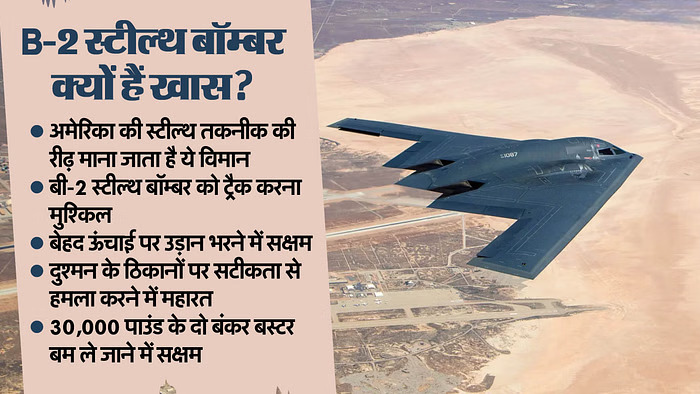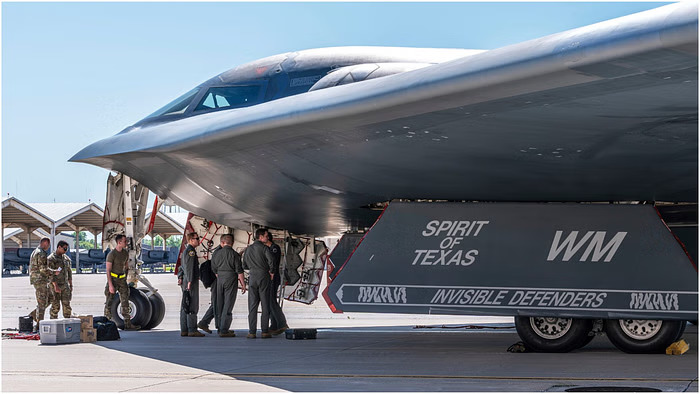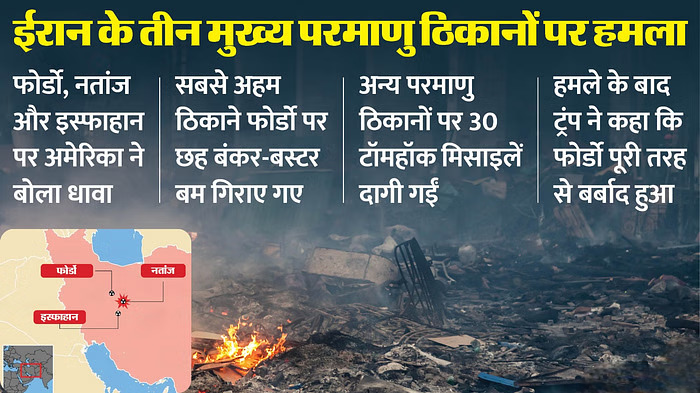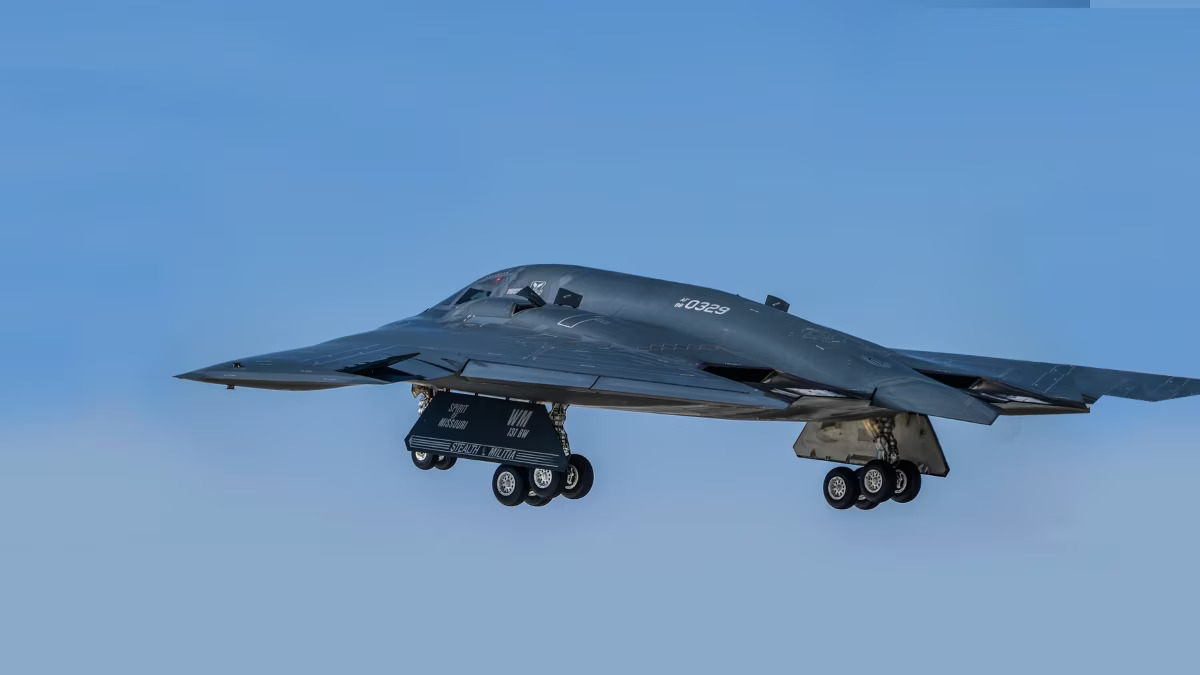By – Aditya Shrivastava
In a dramatic escalation in the Middle East, the United States launched a precision airstrike on Iranian underground nuclear facilities using its most advanced aircraft — the B-2 Spirit stealth bombers. The operation came after a series of Israeli air raids that reportedly failed to inflict substantial damage due to the deeply buried nature of Iran’s nuclear sites.
Massive U.S. Response After Israel’s Limitations
While Israel carried out initial strikes on Iranian nuclear sites, their attacks had limited impact, given that the facilities — including Fordow, Natanz, and Isfahan — are fortified deep underground. Recognizing the limitations of Israel’s military arsenal in penetrating such hardened structures, the United States stepped in with its top-tier bunker-busting capabilities.
On Sunday morning, B-2 bombers flew directly from Whiteman Air Force Base in Missouri, undertaking an approximately 37-hour non-stop mission to Iran and back — the longest combat flight of its kind in recent years. These stealth aircraft were refueled mid-air, demonstrating the U.S. Air Force’s global strike capabilities.

Use of Bunker Buster Bombs and Tomahawk Missiles
The American B-2s were armed with GBU-57 Massive Ordnance Penetrators (MOPs) — also known as bunker buster bombs — each weighing 30,000 pounds and specifically designed to destroy heavily fortified underground structures. The strike reportedly included six MOPs dropped on Fordow, one of Iran’s most secure nuclear facilities.
In addition to the bunker busters, approximately 30 Tomahawk cruise missiles were launched from U.S. Navy platforms to target other strategic nuclear infrastructure across Iran.
Trump Declares ‘Fordow is Gone’
Following the strike, former U.S. President Donald Trump publicly confirmed the attack, declaring, “Fordow is gone.” He praised the mission as an “incredible success” and warned Iran to immediately de-escalate tensions or face further military action.
Trump referred to Fordow as a “heavily fortified underground site,” long believed to be Tehran’s most secure nuclear installation. The scale and accuracy of the attack suggest extensive intelligence coordination and high-level military planning by the Pentagon.

Pentagon Confirms Use of B-2 Bombers
The Pentagon released an official statement confirming the deployment of B-2 Spirit bombers in the strike and emphasized that the mission was executed to neutralize potential threats posed by Iran’s nuclear ambitions. The airstrike comes amid rising tensions between Israel and Iran, with the region on edge after a week-long series of cross-border skirmishes.
A day before the operation, the U.S. had repositioned B-2 bombers to Guam, signaling an increased readiness for strategic global strike missions. Defense analysts suggest that this latest action reflects a shift in U.S. posture, directly involving itself in curbing Iran’s nuclear capabilities.
What Makes the B-2 Stealth Bomber Unique?
Developed by Northrop Grumman, the B-2 Spirit is one of the most advanced long-range bombers in the world. First flown in 1989, the aircraft is a cornerstone of U.S. stealth technology and strategic air power. Its flying wing design, low infrared signature, and radar-evading capabilities make it nearly invisible to traditional air defense systems.
The B-2’s radar cross-section is approximately 0.001 square meters — similar to that of a small bird — enabling it to infiltrate the most heavily defended airspaces undetected. It can travel over 6,000 nautical miles without refueling and can carry both conventional and nuclear payloads.

Understanding Bunker Buster Bombs
The GBU-57 MOP is the most powerful non-nuclear bomb in the U.S. arsenal, capable of penetrating over 200 feet of concrete before detonation. Guided by GPS, these bombs are used to target underground bunkers, command centers, and fortified missile silos.
Designed to tackle threats considered “impenetrable” by conventional munitions, these bombs are considered a last-resort option for precision strikes against deeply buried targets.
Strategic and Diplomatic Implications
The U.S. airstrike marks one of the most direct and significant American military interventions against Iran in recent years, raising serious questions about regional stability and the future of U.S.-Iran relations. With Israel unable to penetrate Iran’s underground facilities, the operation underscores Washington’s continued military dominance and strategic reach.
Diplomatic observers fear this move could spark retaliation from Iran, further complicating the fragile security balance in the Middle East.

